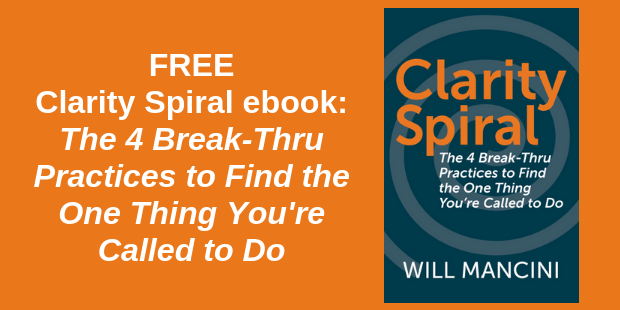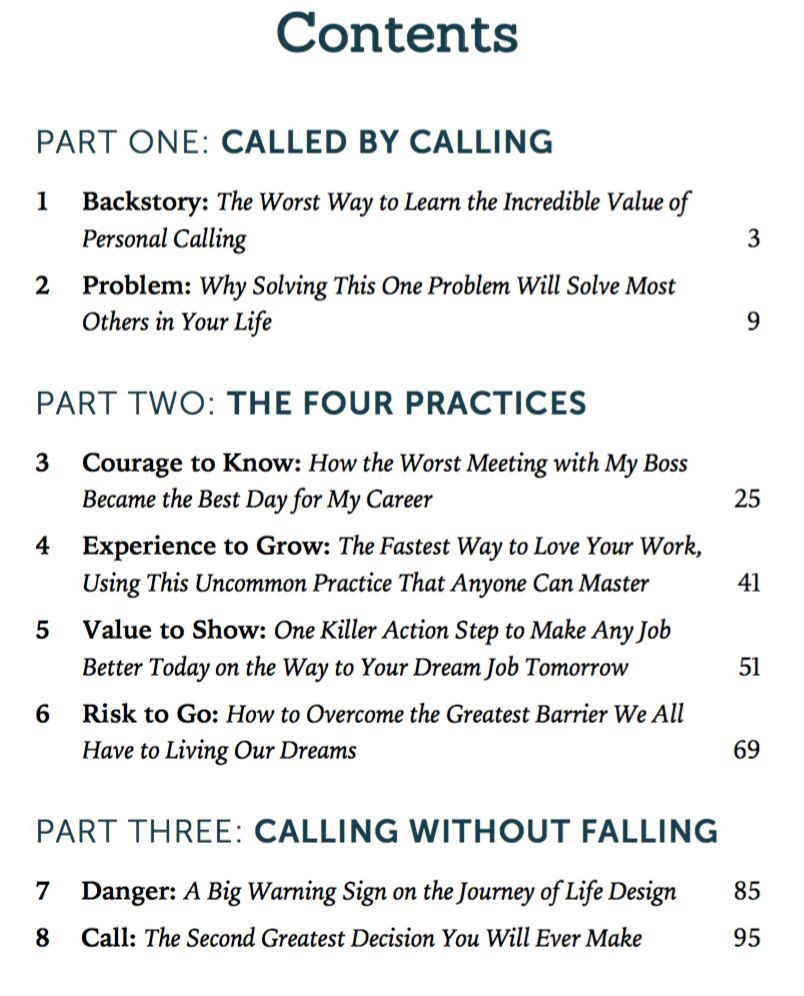When does a human being peak? What is a person’s “succeed-by” date (as in, if you haven’t succeeded by now, forget it)?
Some feel it when they’re 25 or so, when at a professional level athletes ascend, and dancers dazzle and beauty blooms. It’s where cool is concentrated in our youth-obsessed culture. It’s easy for ambitious people to believe that if they don’t get on a 30-under-30 list, they’ll never be a world-changer.
Many feel the peak when they’re around 40. They’re performing at a high level because they have more wisdom and influence than they did in their 20s. The career is progressing nicely and family relationships are going relatively well.
Some feel the peak—or hope to—around the time they retire, usually in their 60s. They want to leave their profession in a blaze of glory, full of achievement. With decent health and with personal wealth at an all-time high, they hope to live it up in their golden years.
So when does a person peak? To get a true grasp—and to get there!—you need Essential Life Design Skill #1 (in the series of 7 skills) and the third skill we are unpacking. (Not in numerical order.) This skill is about embracing four lifelong practices to maximize your work potential and find your dream job. The four practices are:
- Courage to know – Do you seriously know yourself (really) or do you just think that you do?
- Experience to grow – Are you using every good and bad work experience to zero-in on what you can do best?
- Value to show – Are you proactively negotiating how you spend your time at work as the weeks and months of your “9-5 life” go by?
- Risk to go – Are you prepared to leave your current job when the time is right in order to steward of your one and only life?
I talk all about these four practices in my new e-book that releases tomorrow —Clarity Spiral: The 4 Break-Thru Practices to Find the One Thing You’re Called to Do. But in this post, I’m proposing that these four practices for finding your one thing become especially critical at three crossroads: quarterlife, midlife, and three-quarterlife. Take a moment and consider the crucial question that people must confront at each crossroad and a corresponding prescription.
The Quarterlife Question: “What Am I Doing?”
“Quarterlife crisis” labels a phenomenon that’s become almost universal among adults in their 20s. It’s a point in life where aimlessness not only plunges many into depression, but it also threatens to cut off the impact a person may have in the future.
Some people at the quarterlife crisis spend their adolescent years rebelling against parents’ or teachers’ expectations. Others are busy just surviving their dangerous decisions. Yet when these people become adults, their lack of educational success limits their vocational options.
Other people got the diploma or degree they were “supposed” to get. But they never really believed in a career path themselves, so now they’re prepared to do work they don’t care about. They might try to cope with purposelessness by living for the next pleasure (with diminishing returns) or by attempting to draw more meaning from a relationship than it can ever provide.
Still others diligently pursued a life goal they believed in, but once they get their credentials, start a job, or settle down, they find that it doesn’t provide the satisfaction they expected. As one 23-year-old put it:
No one prepares us for the decades’ worth of post-education revelations such as ‘dream jobs’ are pretty hard to come by (but by the way, unemployment isn’t), having a real job is not like an episode of Mad Men, and finding ‘the one’ is virtually impossible.
The Quarterlife Prescription: Commit to Purposeful, Productive Activity Despite Uncertainty
Purposeful, productive activity could be a line of work, raising children, a place to serve, or all of the above. The critical thing is the ability to put up with the drudgery, weight of responsibility, lack of appreciation, and even your own mistakes as a part of the learning process to bring value to the world in general and the workplace world in particular.
In his studies of ministry leaders’ vocational journeys, J. Robert Clinton found that the typical first few years after preparation for their vocation were “provisional ministry.” Clinton gave it that name because it wasn’t clear whether the person would stick with the ministry path or switch to a different career. For those who stuck with it, however, provisional ministry kicked off a 10- to 20-year period of learning to be competent and in some ways excellent at their vocation.
The most important thing about this transition isn’t that you pick the perfect path in life. It’s that you pick some path in life. It doesn’t have to be the last one—in fact, it almost certainly won’t be. But it has to make you willing to devote yourself to getting good at something that does good in the world. That’s the way you find out what you’re good at (and not good at). Then it becomes the launchpad for your next leap.
Fortunately, you don’t have to figure out a good path to take on your own. There’s help out there, which I’ll share at the end of this post.
The Midlife Question: “Is There Something More?”
Many people are surprised that no matter how ardently they commit to a calling in their 20s, it doesn’t sustain them through their whole adulthood. In fact, by age 35 they may begin having serious doubts about it.
Some people get unsettled because of success. Like a player who beats a video game, they’re bored playing it even though they’re good at it. What’s the new challenge that strikes the “sweet spot” of their personal calling?
Other people get unsettled because of failure—or at least, they didn’t get as much success as they had hoped they would. Now they don’t get as much attention either; they’re no longer groomed as up-and-comers but are taken for granted as middle-and-stayers.
Most people probably experience some combination of success and failure. They demonstrate proficiency in what they do, but the path to greater achievement gets a little harder to find.
At midlife people look for a new way to activate and advance their personal calling. But now the stakes are much higher than they were at quarterlife. Loads of people hang on what you do or don’t do: workmates, customers, church members, volunteer organizations, friends, parents, and far above them all your children and spouse. And on top of your relational obligations, your financial obligations are much greater than they once were.
The Midlife Prescription: Take the Risk to Follow Your Calling by Specializing Even More
Robert Clinton found that ministry leaders reach a point at midlife where they need to become more specialized to become more effective. In other words, to contribute more to the kingdom, leaders have to concentrate their efforts on the specific things they do best in the specific sphere and scope where they are most useful.
However, getting into that zone isn’t easy! It often disrupts the life of the leader and those around them in a big way. Because it’s so risky, many—maybe even most—don’t take that path. They remain competent generalists, but they’re no longer growing in effectiveness; they might even start declining.
By contrast, those who take the risks required of specialization find their impact increasing in ways they can hardly imagine. But to take that big step of faith, you need a strong conviction about the good works that God dreamed only you would do. Once again, fortunately, you don’t have to gain this conviction alone, as I’ll share below.
The Three-Quarterlife Question: “What Will Outlive Me?”
People who navigate the midlife transition successfully find that it leads to a new challenge that they don’t expect. In fact, their very success may have set them up to stumble at this crucial point.
Until roughly age 55, your fruitfulness is tied to your activity. If you took the necessary risks at midlife, your activity has probably been exceptionally productive.
But as you approach the three-quarter mark of life, you become ever more aware that you won’t be doing stuff forever. Your faculties are deteriorating. It is more apparent in practical ways that someday you will die. Will the fruit of your labor disappear when you do? What legacy are you going to leave? Will you have borne “fruit that will last” (John 15:16 NIV)?
The Three-Quarterlife Prescription: Make Your Ultimate Contribution to the World by Guiding Others Not Doing It Yourself
Robert Clinton wrote about a leader’s accomplishment that sums up their ministry long after they’re gone. He called it “ultimate contribution.” Because ultimate contribution is about leaving a legacy, it almost always involves preparing people who will carry on your work when your time is done. That means shifting your focus from doing to developing, from mastery to mentoring.
This transition can take different forms depending on your personality and gifting. It could mean evolving your leadership style toward collaborating and coaching and away from planning and directing. It could mean going full time in a job in the training or education field for the first time. It could mean concentrating your creative work on a magnum opus that younger generations will study. It could mean moving from “pro” to “caddie” by deliberately taking a new position as a loyal subordinate, such as a lead pastor who becomes an associate pastor or a parent who supportively assists their grown children as parents.
These are all big-time moves that require as much willingness to change as the transitions you navigated at quarterlife and midlife. This is not easy, because as you age, the energy you have to allocate becomes more limited than ever. In most cases, you can’t do legacy-making activity unless you stop much of what you’ve been doing up to this point, which happens to be stuff you are very good at it and receive applause for. In fact, what you have been doing probably pays better. Therefore you have to determine the nature of your payday: is it a bigger paycheck at age 67 or a greater legacy? For the few people who even make it to this life-stage crisis, fewer still navigate it with great intention.
But those who successfully navigate this crossroads make an impact that remains on this earth long after they stop working and even after they stop breathing. “They will still bear fruit in old age, healthy and green” (Ps. 92:14 CSB).
Help at the Three Crossroads
The challenges at quarterlife, midlife, and three-quarterlife are all different. But in this respect they are the same: to overcome them, you need grow in clarity about your special calling from God.
Younique was created to help people do just that.
Younique equips people to know and name their life’s purpose, which is especially valuable at the quarterlife crossroads.
Younique equips people to focus their calling and inspires them to take “risk to go,” which is especially valuable at the midlife crossroads.
Younique equips people to discern and embrace their ultimate contribution to the world, which is especially valuable at the three-quarterlife crossroads.
At the beginning of this post I asked, “When does a human being peak?” Depending on how you look at it, your strength starts declining at any of these crossroads. That’s just a part of this mortal life.
But for a servant of God, that’s not the whole story. Your impact—your fruit—can increase your whole life long. You can even hit peak after you’ve left it for good! God will perpetuate your effectiveness from generation to generation if you follow his calling at every crossroads of your life.
Don’t forget, my free e-book launches tomorrow!
In addition, as I navigate my own crossroads at age 49 this year, I want to help others dream and plan while I dream and plan. So I am launching an initiative to help you complete your 100 Life Dream List by Easter 2019. I’ll be guiding you from Aspen as I fulfill the bucket list dream that I share more about here. #LifeDesignWithMe
Cory Hartman contributed to this post.
> Read more from Will.

Tags: Life Call, Life Design, Life Younique, Peak Performance, Will Mancini, midlife, quarterlife, three-quarterlife, younique
|
What is MyVisionRoom? > | Back to Vision >






















